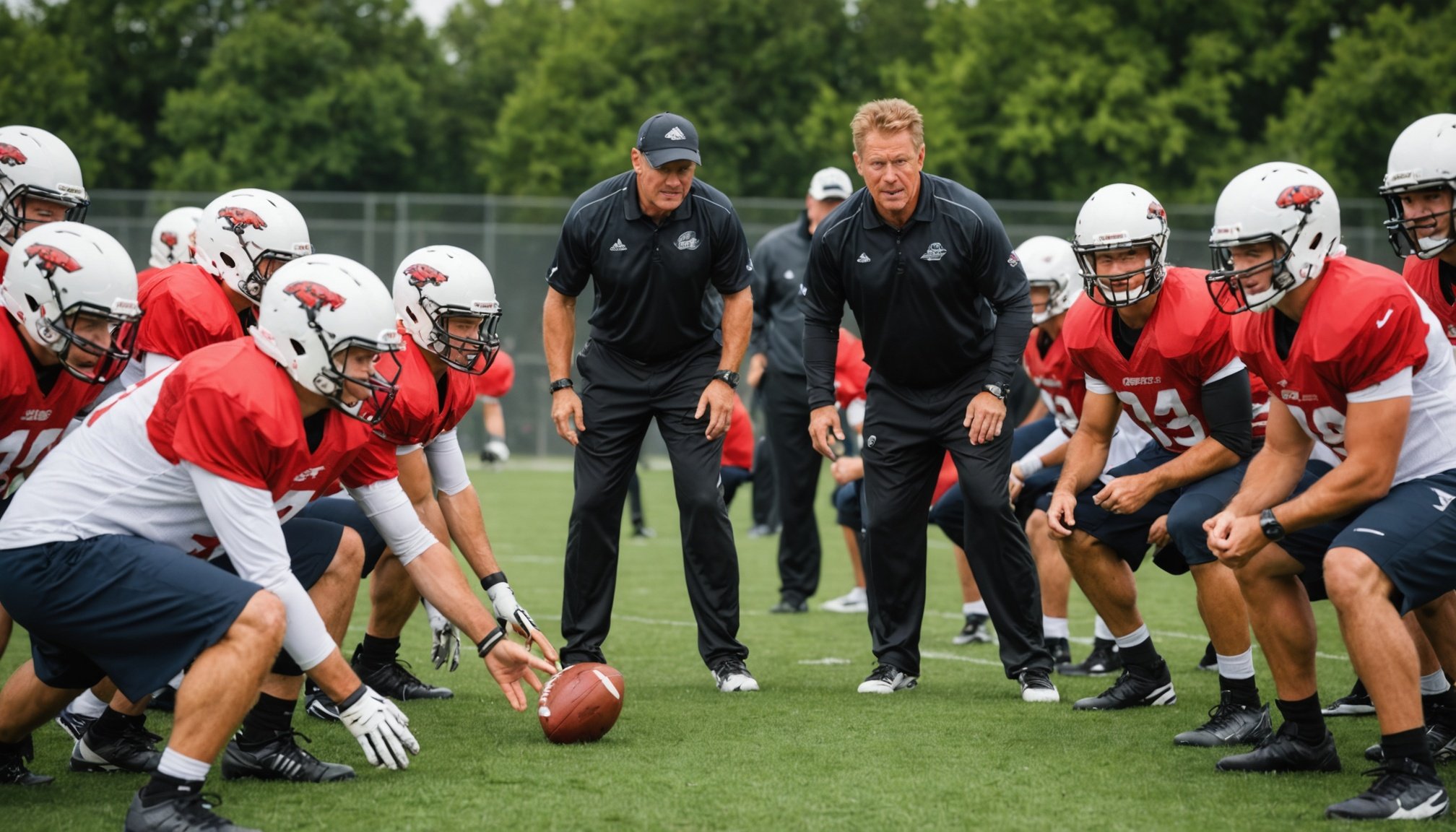Innovative Training Methods for Enhanced Player Engagement
In order to bolster engagement, football training requires a blend of innovative coaching techniques. The first step in achieving effective modern training methods is understanding the importance of engagement in training sessions. Engagement not only boosts player involvement but also fosters a deep connection between players and their sport, ultimately enhancing performance.
One major component in promoting player involvement is adopting modern training methods that emphasize creativity and fun. Techniques such as small-sided games and scenario-based exercises are marvelous ways to maintain high energy and interest levels among players. These activities encourage adaptations and cooperation, which are crucial in a dynamic game like football.
This might interest you : Revitalizing your game: essential fitness hacks for football players navigating injury recovery
The role of technology cannot be overstated when it comes to innovative training practices. Modern tools such as video analysis software and wearable technology can provide valuable insights into performance and fitness levels. Coaches can use this data to tailor training sessions, ensuring each player’s engagement and development are optimized. Incorporating these technologies seamlessly into training sessions ensures a stimulating environment that is both enjoyable and instructive for the players.
Interactive Drills to Promote Team Cohesion
Interactive drills are vital in fostering team cohesion in football. They are designed to improve communication and encourage players to cooperate, reflecting real-world scenarios. By incorporating these drills, teams better understand each other’s play styles, strengths, and areas needing improvement.
In parallel : Crucial legal protections every uk football player should know for successful contract negotiations
Benefits of Interactive Drills
The benefits of interactive drills include enhancing communication and improving teamwork. Players learn to anticipate each other’s movements, creating a fluid and cohesive unit on the field. These drills also boost morale by making training sessions enjoyable and challenging, which can lead to increased engagement.
Examples of Effective Interactive Drills
Effective drills include small-sided games and cooperative training activities. These games simulate match conditions that require teamwork to solve challenges or achieve common goals. Exercises such as the ‘Rondo’ focus on possession and pressure, encouraging quick decision-making among teammates.
Techniques to Integrate Drills into Training Sessions
To integrate drills effectively, employ strategies such as gradually increasing complexity, ensuring all players understand the objectives. Encourage feedback and adapt drills to suit the team’s dynamic. Emphasising clear goals and evaluating performance helps to measure the drills’ success while sustaining motivation.
Gamification in Football Training
Gamification transforms conventional football training by integrating motivational strategies into exercises. This approach elevates engagement by turning routine practices into stimulating football training games. These games not only motivate players but also intensify their enthusiasm and commitment towards training.
To design effective and engaging training games, the focus should be on creativity and inclusivity. Consider creating challenges that cater to diverse skill levels, ensuring every player is involved. Balancing competitiveness with collaboration is key, allowing for skill development in a supportive environment.
One critical aspect is measuring player engagement through gamified training approaches. Monitoring progress can be achieved through feedback from players and performance metrics such as speed or accuracy improvements in drills. This data is essential to adapt and refine exercises to better suit team needs.
The significance of gamification lies in its ability to make training more appealing. By blurring the lines between play and practice, players can experience enhanced motivation, leading to better performance in matches. Implementing these strategies requires careful planning and an understanding of a team’s dynamics and individual preferences, ensuring all players benefit from this innovative approach. This method elevates training, making it a genuinely immersive experience.
Psychological Approaches to Enhance Engagement
In football, the significance of psychological strategies cannot be overlooked. These strategies foster player motivation and elevate engagement levels, crucial for peak performance.
The Role of Motivation in Training
Understanding the motivation driving players is essential. Intrinsic factors, like a player’s love for the game, often yield more substantial commitment than extrinsic rewards. By nurturing this deeper motivation, coaches can instill a lasting passion for training.
Techniques to Cultivate a Positive Mindset
Cultivating a positive mindset among players is vital. Encouraging self-belief through mental techniques, such as visualization and goal-setting, empowers players to tackle challenges confidently. When players see themselves as capable, their engagement naturally increases.
Addressing Individual Player Needs
Tailoring approaches to meet the individual needs of players is crucial for sustained engagement. By recognizing distinct psychological needs, coaches can adapt their communication and leadership styles, ensuring each player feels supported. Focusing on personal development enhances overall team performance, creating a cohesive and motivated unit.
Case Studies of Successful Engagement Techniques
Exploring successful case studies in football uncovers valuable insights into engaging players effectively. These evidence-based techniques highlight innovative methods used by top football clubs. For instance, some organisations have adapted modern training methods like cooperative activities enhancing team cohesion, galvanising players to collaborate more fluidly.
A compelling case study is a club who integrated gamification into their training regime. By embedding football training games, they witnessed a notable increase in player motivation and performance. Players displayed improved anticipation and coordination, thanks to the motivational strategies underpinning the training structure. This approach demonstrated how gamification can transform routine drills into exciting challenges.
Key takeaways from these successful practices include the importance of tailoring techniques to the team’s unique dynamics. Customising strategies based on player feedback ensures a fit-for-purpose approach that maximises engagement levels. Furthermore, consistently analysing performance data aids in fine-tuning these strategies, amplifying their effectiveness.
Teams looking to replicate such success should adopt these methods thoughtfully. Understanding individual team dynamics and preferences is crucial in fostering an engaging atmosphere. Employing case studies as a reference points can guide teams in adopting a cohesive and motivated training environment.
Practical Tips for Implementation
The integration of innovative coaching techniques in football training sessions can be challenging. To ease this process, consider a step-by-step implementation guide. Start by evaluating current training approaches and identifying areas for enhancement. Gradually introduce engaging football training activities to maintain continuity and avoid overwhelming players.
To overcome common challenges such as resistance to change, engage players with motivational discussions, highlighting the long-term benefits of modern training methods. Foster an open feedback culture, allowing players to express concerns and suggestions, ensuring they feel valued and part of the transition.
Utilising appropriate tools and resources is crucial. Coaches should leverage technology, such as performance tracking apps and video review software, for insights into player development. These resources not only provide valuable data but also enhance the effectiveness and inclusivity of training practices.
Innovative techniques require time and patience. Therefore, encourage adaptation by setting realistic goals and celebrating small victories. This approach nurtures a positive environment, reinforcing players’ commitment to the newly introduced training methodologies.











